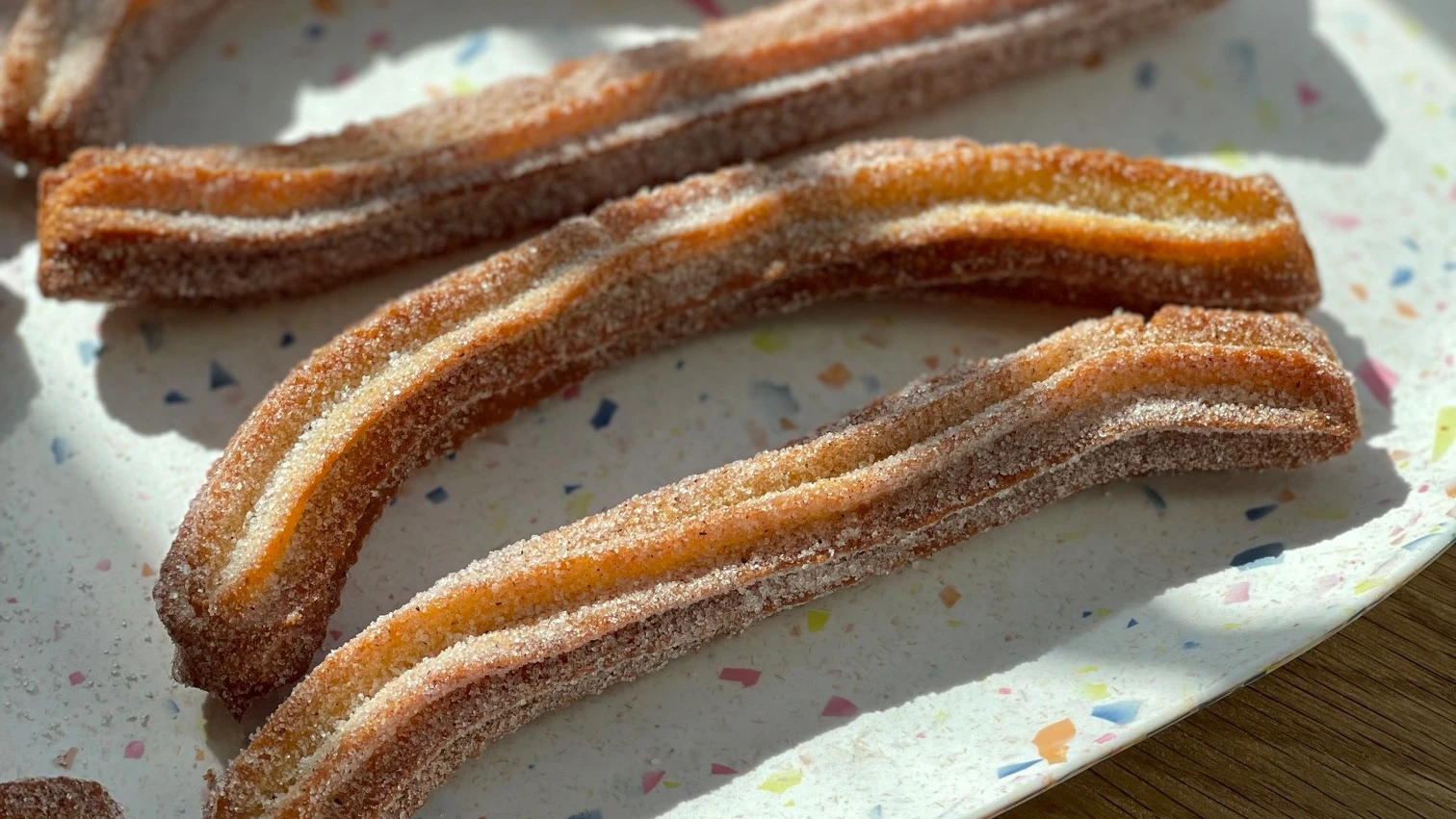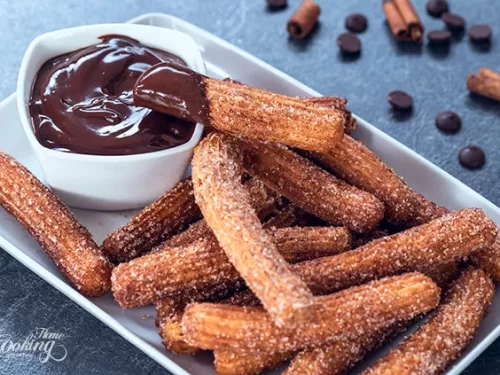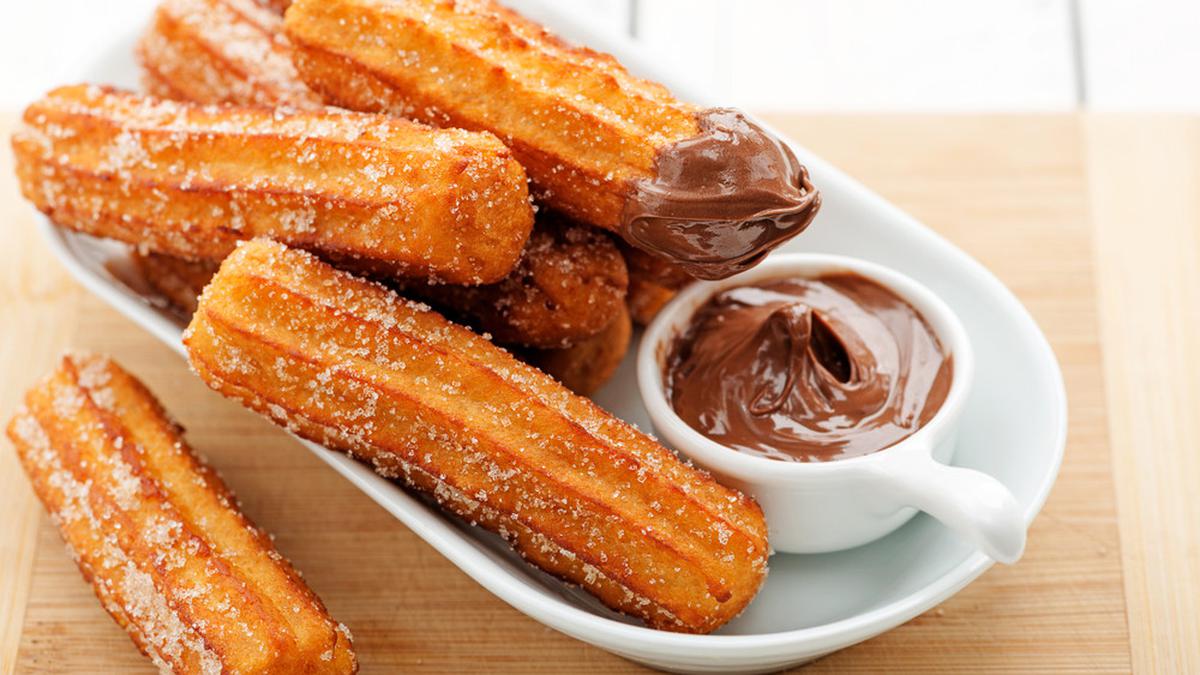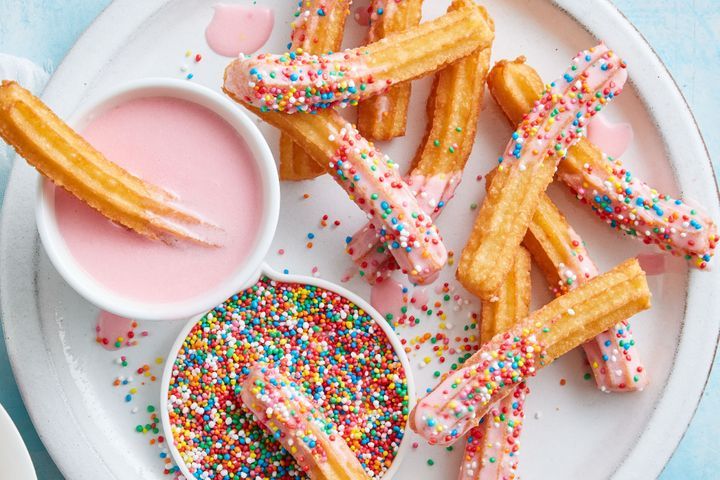Churros, the beloved fried-dough pastry, have journeyed from their humble beginnings in Spain to becoming a global sensation. Known for their crispy exterior and soft, airy interior, churros are enjoyed in various forms, from simple sugar-coated treats to extravagant creations filled with chocolate or caramel. This article delves into the history, preparation, variations, and cultural significance of churros, highlighting their enduring appeal and evolving presence in contemporary cuisine.
Churros Historical Roots

The origins of churros are a subject of much debate and folklore. One popular theory traces their roots back to Spanish shepherds who, lacking access to fresh bakery products, crafted a simple dough that could be easily fried over an open flame. This theory is supported by the similarity between the shape of churros and the horns of the Churra sheep, a breed native to the Iberian Peninsula.
Another theory suggests that Portuguese explorers introduced a similar pastry to Spain after encountering youtiao, a type of fried dough stick in China. Regardless of their precise origin, churros quickly became a staple in Spanish cuisine and were embraced across Latin America and other parts of the world.
The Art of Making Churros
The basic ingredients for churros are simple: flour, water, a pinch of salt, and sometimes a bit of butter. Despite this simplicity, achieving the perfect churro requires attention to detail and precise technique.
The Dough
Churro dough is a type of choux pastry, similar to that used for making éclairs and profiteroles but without the eggs. The dough is made by boiling water (and sometimes milk) with butter and salt, then adding flour all at once and stirring vigorously until the mixture forms a smooth ball. The dough is then left to cool slightly before being transferred to a piping bag fitted with a star-shaped nozzle.
Frying
The shaped dough is piped directly into hot oil, typically vegetable oil, and fried until golden brown and crispy. The temperature of the oil is crucial: too hot, and the churros will burn on the outside while remaining raw inside; too cool, and they will absorb too much oil and become greasy.
Coating
Freshly fried churros are traditionally rolled in a mixture of sugar and cinnamon, giving them a sweet and slightly spicy flavor that complements their crunchy texture.
Variations and Innovations

While the classic churro remains a favorite, modern twists and regional variations have added exciting dimensions to this traditional treat.
Filled Churros
In many parts of Latin America, churros are filled with delicious fillings such as dulce de leche, chocolate, or vanilla custard. These filled churros are often piped with the filling after frying, adding an extra layer of indulgence.
Churro Sundaes and Desserts
In recent years, churros have become a popular component of elaborate desserts. Churro sundaes, featuring churros topped with ice cream, whipped cream, and various sauces, have become a trendy dessert option in many restaurants and cafes.
Churro Bowls and Cones
Innovative bakers have also created churro bowls and cones, shaping the dough into edible containers that can be filled with ice cream, fruit, or other treats. These creative presentations have made churros even more popular in the age of Instagram-worthy foods.
Churros Around the World
Churros have been embraced globally, with each region adding its unique twist to the traditional recipe.
Spain
In Spain, churros are often enjoyed for breakfast, dipped in thick hot chocolate, a tradition known as “chocolate con churros.” Spanish churros are typically long and thin, and they are sometimes made in a loop or spiral shape.
Mexico
Mexican churros are slightly different, often shorter and thicker than their Spanish counterparts. They are usually served with a side of cajeta (a caramel-like sauce made from goat’s milk), chocolate sauce, or sweetened condensed milk.
United States
In the United States, churros have become a popular fairground and amusement park treat. American churros are typically dusted with cinnamon sugar and served plain or with dipping sauces. The influence of Mexican cuisine has also led to the rise of filled churros in many bakeries and food trucks across the country.
Philippines
In the Philippines, churros are a popular snack, often served with a rich chocolate dipping sauce. The Filipino version of churros is influenced by the country’s Spanish colonial history and is a favorite treat during celebrations and festivals.
The Cultural Significance of Churros

Churros hold a special place in the culinary traditions of many cultures. In Spain and Latin America, churros are more than just a snack; they are a part of social gatherings, family traditions, and celebrations.
In Spain, churros are often enjoyed during festivals and holidays, bringing people together over a shared love of food. The tradition of eating churros with hot chocolate on cold winter mornings is a cherished part of Spanish culture.
In Mexico and other Latin American countries, churros are a popular street food, sold by vendors at fairs, markets, and city streets. They are a symbol of community and celebration, often associated with local festivals and family gatherings.
The Science Behind Churros
Understanding the science behind churro making can enhance the cooking process and the final product. The key to a perfect churro lies in the dough and frying process.
The dough’s consistency is crucial; it should be latoto smooth and not too thick, allowing it to be easily piped through a star-shaped nozzle. The star shape is important as it increases the surface area of the dough, leading to a crispier texture when fried.
The frying temperature must be carefully controlled. The ideal temperature is around 375°F (190°C). This ensures that the churros cook evenly, becoming golden and crispy on the outside while remaining light and airy inside.
Churros in the Modern Culinary Scene
In today’s culinary landscape, churros have experienced a resurgence in popularity, driven by both nostalgia and innovation. The rise of street food culture and the influence of social media have contributed to the churro’s global appeal.
Food festivals and street markets often feature gourmet churro stands, where traditional recipes are given a modern twist with creative fillings and toppings. Chefs and home cooks alike are experimenting with new flavors, such as matcha, red velvet, and even savory churros with cheese and herbs.
Conclusion: A Timeless Delight
Churros, with their crispy exterior and tender interior, have captivated taste buds for centuries. From their debated origins in Spain and Portugal to their widespread popularity across Latin America and beyond, churros have proven to be a versatile and beloved treat.
Their ability to adapt to modern culinary trends while maintaining their traditional roots has ensured their place in the hearts of food lovers worldwide. Whether enjoyed plain, filled, or topped with extravagant toppings, churros remain a symbol of comfort, joy, and culinary creativity.
As churros continue to evolve and inspire new generations of bakers and chefs, their legacy as a timeless delight is secure. This humble fried-dough pastry, rich in history and flavor, will undoubtedly continue to bring sweetness and delight to people around the world for years to come.
Read More Article About “Ohmi-Gyu Beef Steak Pendahuluan“





